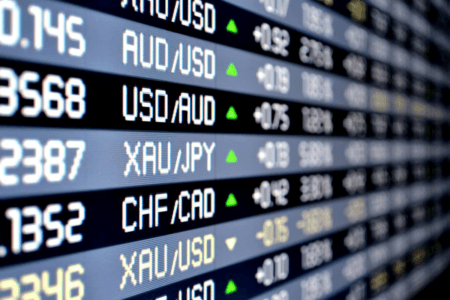What impact did US inflation data and crude price increases have on Gulf stock markets? The recent US inflation data, indicating a potential interest rate cut, combined with rising crude prices, have contributed to gains in most Gulf stock markets.
Gulf stock markets largely finished on a high note on Sunday, buoyed by the latest US inflation data and an uptick in crude oil prices. The optimistic financial pulse comes as investors recalibrated their expectations for the Federal Reserve’s interest rate trajectory.
Key Takeaways:
- Most Gulf stock markets ended higher, anticipating a US rate cut.
- Revised US inflation data for December showed underlying inflation pressure.
- Gulf markets respond to global economic cues and regional developments.
Investors across the Gulf region were encouraged by US inflation figures for December, which were revised to show a smaller increase than initially estimated. Despite the revision, the data revealed persistent inflation pressures, which in turn did not significantly alter the forecast for Federal Reserve interest rate adjustments.
The anticipation of the January inflation report, due on Tuesday, adds another dimension of speculation. Market sentiment appears to be influenced by these data points, with implications for the wider global economy and monetary policy decisions.
Read: Philippines Landslide Death Toll Rises to 54
In the Gulf Cooperation Council (GCC), monetary policy tends to move in lockstep with the Fed due to most regional currencies being pegged to the US dollar. This relationship underscores the importance of US economic indicators for Gulf markets.
Saudi Arabia’s stock index saw a 0.5% rise, with notable gains from major financial and mining players like Al Rajhi Bank and Saudi Arabian Mining Co. This uptick comes as Saudi Arabia is reportedly preparing to sell more shares of Aramco, the state-owned oil giant, reinforcing the nation’s efforts to diversify its economy.
Meanwhile, Qatar’s market index also experienced a surge, propelled by a significant jump in the shares of Nakilat, which was chosen by QatarEnergy to manage a fleet of LNG carriers. The interconnectedness of regional companies was highlighted by the sharp rise in Qatar Navigation shares, which holds a substantial stake in Nakilat.
The buoyancy of oil prices at the end of the week, settling with a 6% week-on-week increase, served as a catalyst for financial activity in the Gulf, where economies are heavily intertwined with the energy sector.
Contrasting the gains in the Gulf, Egypt’s blue-chip index faced a downturn, with a majority of stocks, including the heavyweight Commercial International Bank, experiencing declines.
As the markets process these developments, the next wave of economic data and regional market drivers will continue to shape investor strategies. The synchronization of Gulf market trends with global economic indicators and regional developments remains a critical element in forecasting the financial climate of the region.
Tags: #GulfStockMarkets, #USEconomy, #InflationData, #CrudeOilPrices, #InterestRates
What’s your take on this? Let’s know about your thoughts in the comments below!












